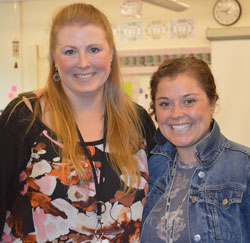Katie McManus says some 500 million plastic drinking straws are thrown away every day. The Knapp Forest Elementary sixth-grader also knows that “away” is still … well … somewhere.

For instance, an estimated 8.3 billion straws wash up or are discarded on the world’s beaches, she said, “enough to wrap around the earth twice.”
“They break down, but it takes a very, very, very long time,” Katie explained. “And even when they do, there are still microscopic pieces left that fish eat, and it clogs their digestive systems. And when people eat the fish, they are eating those plastic particles too.”
Katie said she feels so passionately against the use of plastic straws and their effect on water quality and freshwater ecosystems that she has ordered a reusable metal one.
She also has channeled her frustration into a short video, which is expected to be shown this morning, May 31, along with about 15 others to family, friends and community members at the Forest Hills Fine Arts Center.
Water Quality Education
Since just after returning from spring break, sixth-graders were given a scenario: The city of Grand Rapids was enlisting help from young people to create videos about how human activity impacts fresh water sources, and what people can do about it.
Topics include deforestation, climate change, the Flint water crisis, invasive species on land and in water, and more.
This was the second year the videos were done by students of teachers Cortney Kittridge-Cook and Christen Topolinski. They were initiated as a project with Groundswell, with whom the school has partnered for water quality education for the past four years. Students were graded on extensive criteria that included the use of images, script-writing, video editing and use of credible sources.

“We’d done the invasive species pulls, and we’d done the butterfly garden,” Kittridge-Cook said. “We were looking for something new that students would really get into.
“They are so into technology at this age, and so into watching videos, that we thought, how can we channel that into a project on water quality, and how can we tie in our informational reading and writing?”
Kittridge-Cook said she was impressed by the amount of work students put into the videos.
“Honestly, every kid goes all in with these,” she said. “With some, I struggle all year to get them to complete a writing assignment. With this being video, they were all excited.”
Topolinski agreed.
“Given that they could see what fourth-graders created last year, this year the videos were much more integrated. It’s been fun to watch it all come together. And kids that may not shine in other areas of school really do when they can be so creative like this.”
CONNECT
‘Plastic Pollution’ by last year’s winner, Lindsey Soet










